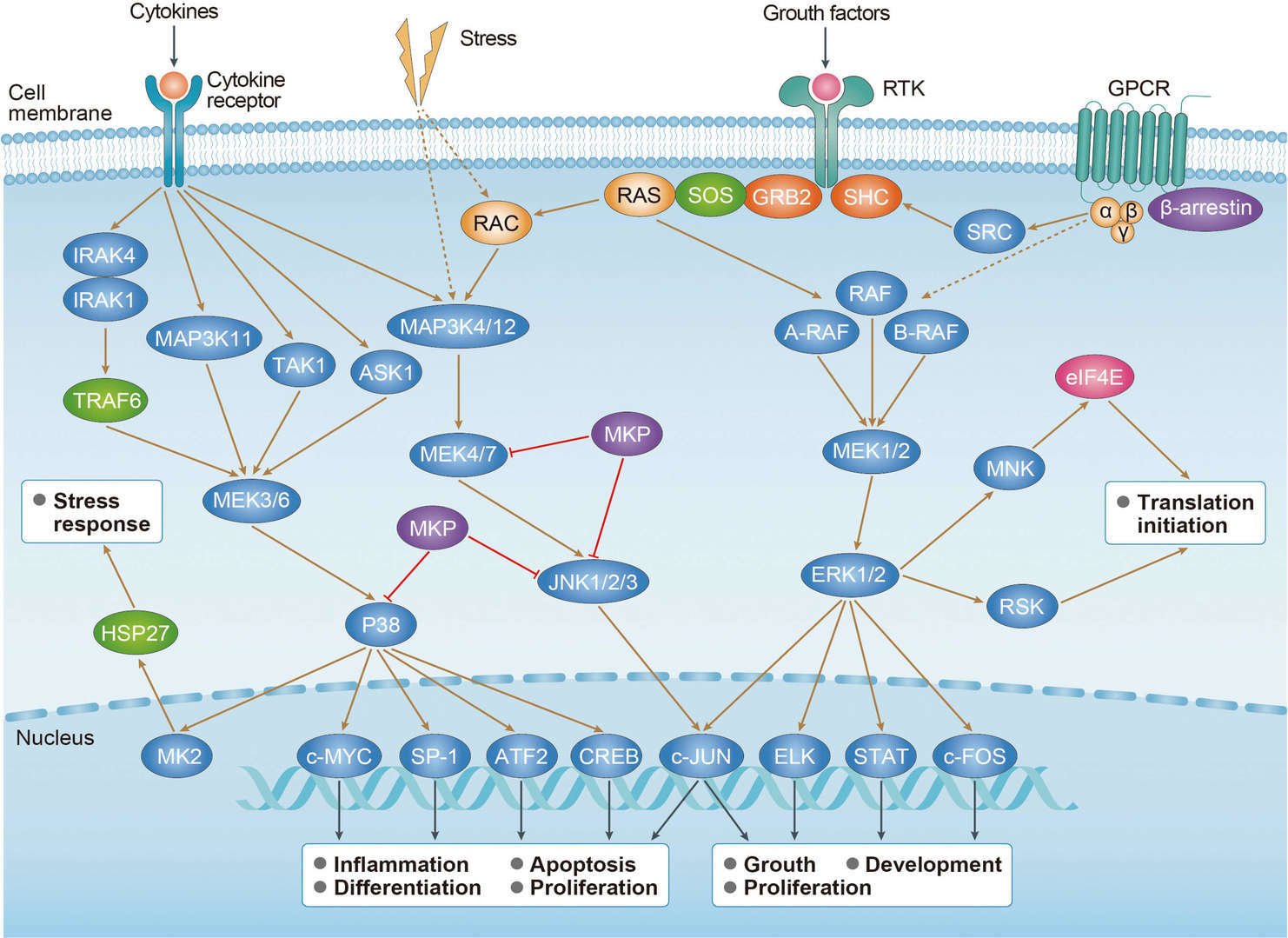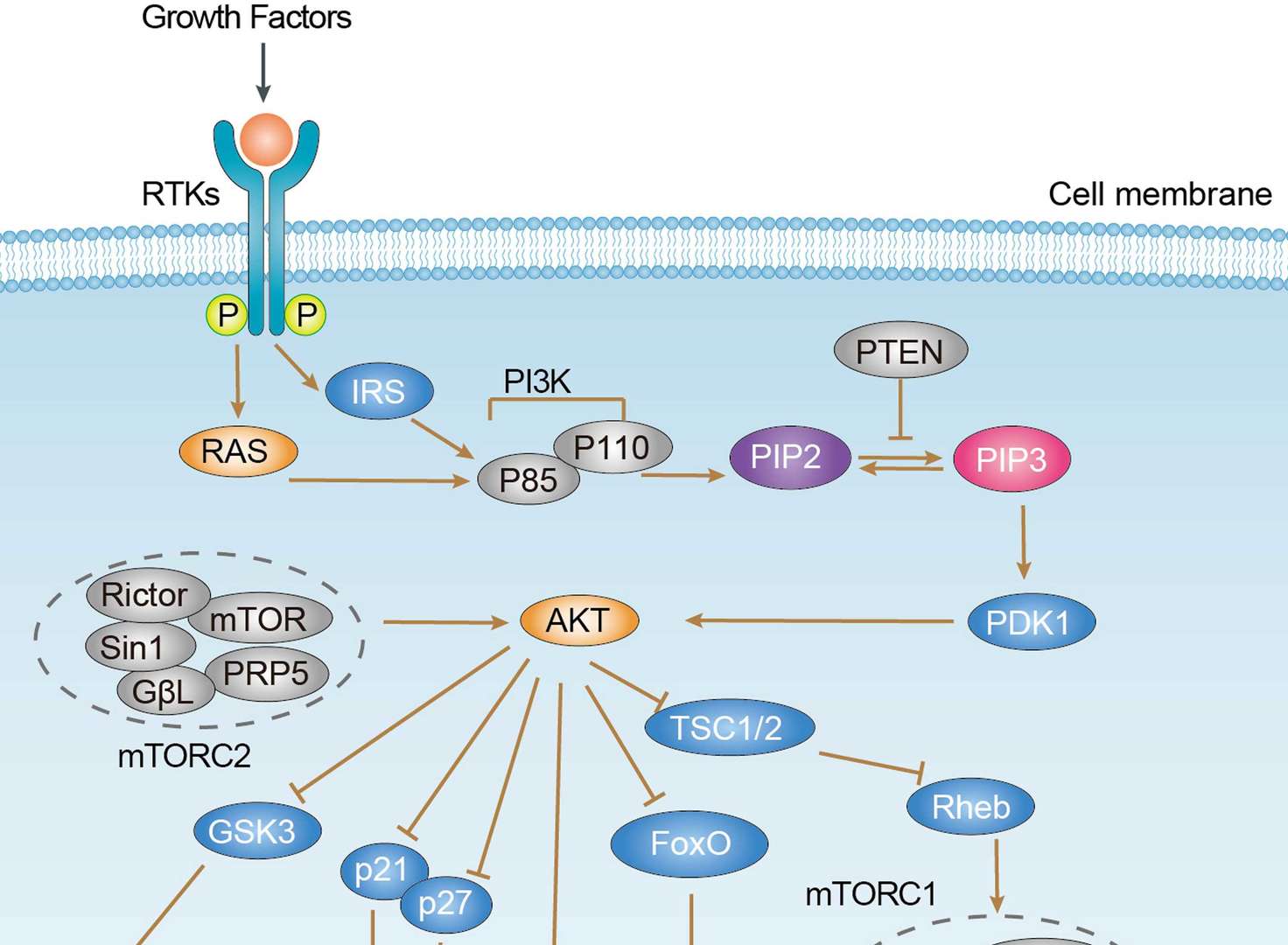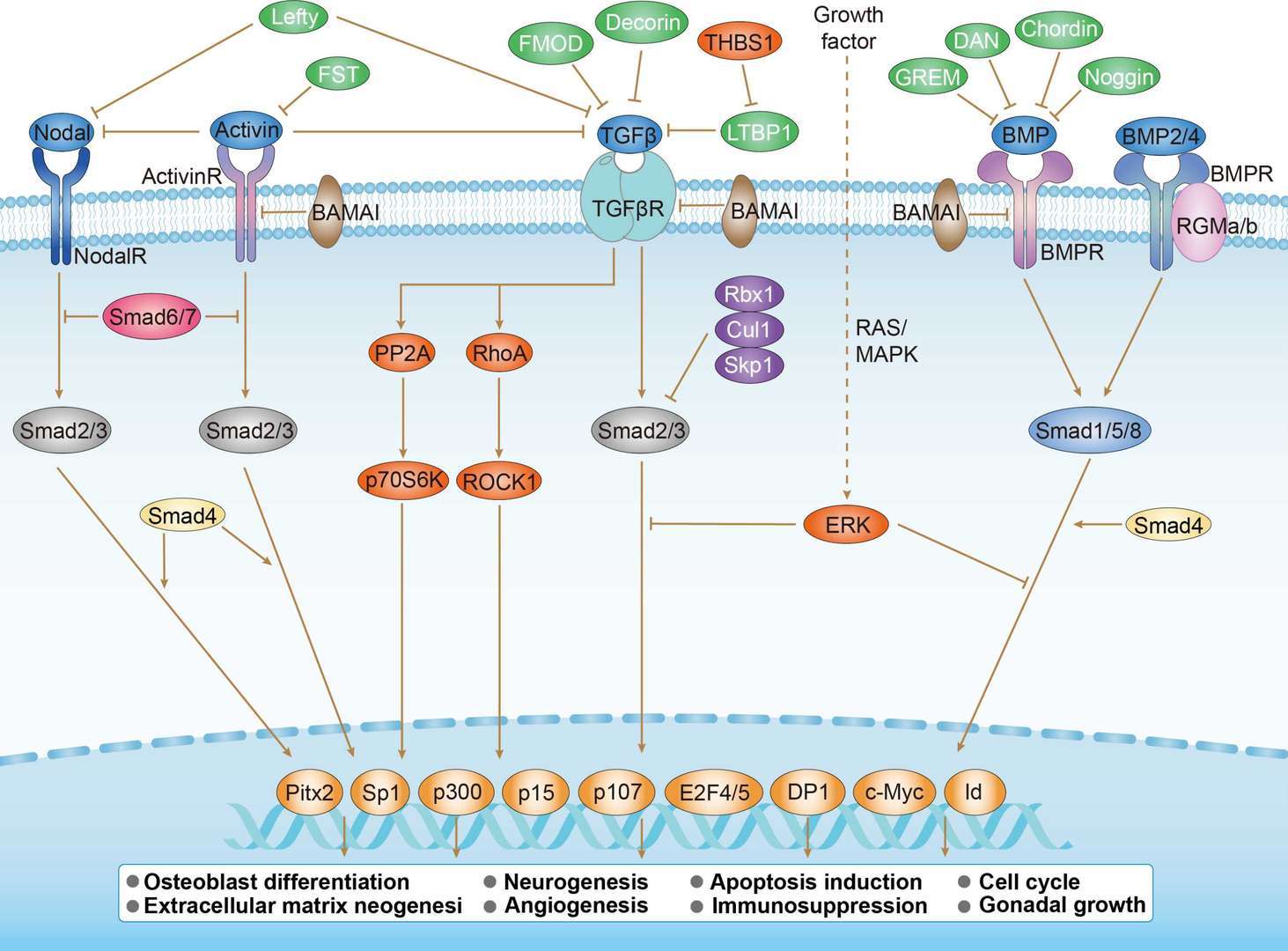AGE-RAGE Signaling Pathway in Diabetic Complications
About AGE, RAGE and AGE-RAGE Signaling Pathway
Advanced glycation end products (AGEs) are proteins or lipids that become glycated as a result of exposure to sugars. AGEs have a crucial influence in almost every type of cell and molecule within the body. Moreover, they are thought to play a causative role in the vascular complications of diabetes mellitus. The major receptor for AGEs, called the receptor for advanced glycation end products (RAGE or AGER), is a member of the immunoglobulin superfamily and has been described as a pattern recognition receptor. RAGE is expressed on multiple cell types implicated in the immune inflammatory response and atherosclerosis. Multiple studies have shown that ligand–RAGE interaction on cells, such as monocytes, macrophages, and endothelial cells, can regulate cellular migration and upregulation of proinflammatory and prothrombotic molecules. RAGE is mainly responsible for signal transduction and ligand-induced up-regulation after ligand binding. Binding of AGEs to their receptor RAGE can activate a range of signaling pathways, including JAK-STAT signaling pathway, MAPK signaling pathway, PI3K/Akt signaling pathway, TGF(-β) signaling pathway, Calcium signaling pathway. These signaling pathways are important and link to diabetic complications.
AGE-RAGE Signaling Pathway in Diabetic Complications
Related Pathways in AGE-RAGE Signaling
Functions of AGE-RAGE Signaling Pathway in Diabetic Complications
Excessive deposition of advanced glycation end products (AGEs) can damage the structure of the extracellular matrix, change its biochemical properties and metabolism, and lead to the covalent cross-linking of proteins. For example, binding of AGEs to their receptor RAGE can activate AGE-RAGE signaling pathway while activate and regulate a range of signaling pathways, including activation of protein kinase C (PKC), tyrosine phosphorylation of JAK-STAT, PI3K-Akt, MAPK and calcium signaling pathways. By activating MAPK and PI3K-Akt signaling pathways, NAPDH can be further activated to increase the formation of reactive oxygen species, activation of caspase-3 and degradation of nuclear DNA, thereby causing damage and even apoptosis of nerve cells. Besides that, binding of AGEs to RAGE leads to the production of oxygen free radicals (ROS), which cause increased transcription of NF-κB and transcription factor activator protein-1 (AP-1). Furthermore, NF-κB and AP-1 can regulate the expression of cytokines, growth factors (such as TNF, IGF-1, IFN-γ) and adhesion molecules (such as ICAM-1, VCAM-1), and affect the cell function. All in all, the binding of AGE to its receptor RAGE products NAPDH and improves oxidative stress, activates the NF-κB signaling pathway, and further stimulates the production of cytokines and growth factors, thereby causing damage in cells and tissues. Therefore, this signaling pathway plays a crucial role in the pathogenesis of diabetic complications.
Related Diabetic Complications
Many researchers suggest that AGEs formation and accumulation are enhanced in diabetes. Moreover, AGEs have an important influence on most age-related diseases such as Alzheimer's, cancer, cardiovascular disease, kidney disease, high blood pressure, stroke, visual impairment, and skin diseases. In addition, due to an enhanced level of RAGE ligands in diabetes or other chronic disorders, these receptors are thought to play a causative role in a range of inflammatory diseases such as diabetic complications, Alzheimer's disease, and even some tumors. In terms of the AGE-RAGE signaling pathway, AGE-RAGE signaling-mediated diabetic complications include diabetic neuropathy, diabetic nephropathy, diabetic vascular complications, and diabetic foot syndrome.
For research use only. Not intended for any clinical use.
This site is protected by reCAPTCHA and the Google Privacy Policy and Terms of Service apply.


 MAPK Signaling Pathway
MAPK Signaling Pathway PI3K/Akt Signaling Pathway
PI3K/Akt Signaling Pathway TGF-β Signaling Pathway
TGF-β Signaling Pathway
